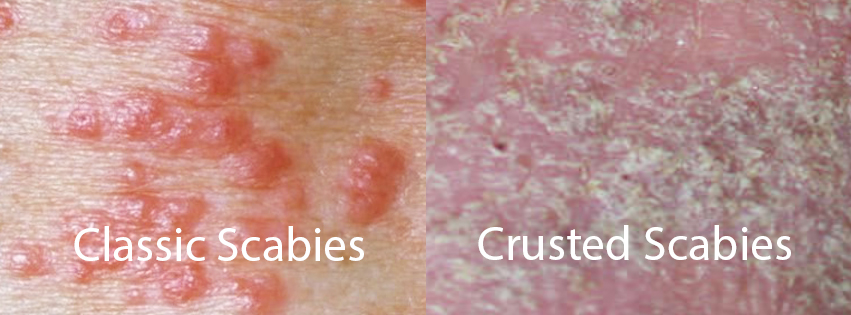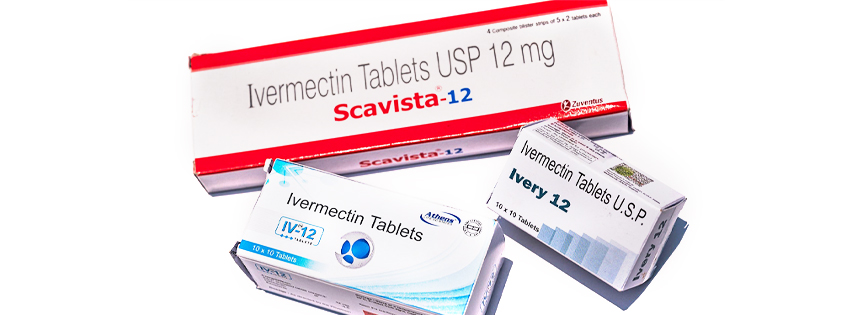
Ivermectin for Scabies
Scabies is a highly contagious skin condition that affects around 200 million people worldwide. Scabies affects up to 10% of children in poor areas throughout the world. Scabies is common in all countries, although it is more prevalent in tropical regions and places with high population density.
What Is Scabies?
Scabies is a parasitic infestation of the skin caused by a microscopic mite, Sarcoptes scabiei var hominis. The mite reproduces on the skin surface then burrows into the top layer of skin, where it resides and lays eggs. The most typical signs of human scabies are intense itching and a pimple-like rash on the skin. At night, the desire to scratch may be particularly strong.
Scabies infestation is most often spread from direct skin-to-skin contact with an infected individual. Scabies is highly infectious and can quickly spread through in a family, school, nursing home, child care, or jail. Scabies mites may also be spread via clothing or bedding.
Doctors often prescribe treatment of scabies for everyone who comes into frequent contact with the patients since scabies infestation is so easily spread. Human scabies can be cured with topical agents and oral treatment.
The mites that cause human scabies and their eggs are destroyed using scabicides applied to the skin and/or taken orally. Even after successful treatment, patients may experience some itching for several weeks.
Symptoms of Scabies
Small blisters or bumps are often seen in folds of skin. Itching is typically severe, and it gets worse at night.
Although scabies can affect almost any area of the body, it is most frequently found between the fingers, underarms, waist, inner elbows, soles of the feet, breasts, male genital region, buttocks, and knees in adults and older children.
In infants and small children, scabies is often found on the scalp, palms of the hands, and soles of the feet.
Signs and symptoms of scabies appear shortly after exposure if you’ve had the disease before. If you’ve never had scabies, it might take six weeks or longer for symptoms to begin. Even if you don’t have any signs or symptoms, you can still spread scabies.

What Is Crusted Scabies?
Crusted scabies, also known as Norwegian scabies, is a severe form of scabies that can affect people who have a weak immune system (immunocompromised patients), the elderly, debilitated, and the disabled.
Crusted scabies is a skin condition in which the affected area has a thick crust of skin, which contains a lot of scabies mites and eggs. They frequently do not demonstrate the typical symptoms of scabies, such as a rash or itching.
Crusted scabies is highly contagious to other people and can easily spread the infection via direct skin-to-skin contact as well as via contamination of objects such as their clothing, furniture, and bedding.
To avoid outbreaks of scabies, individuals who have crusted scabies should get prompt and aggressive medical therapy for their infestation.
Treatment for Scabies
The medications listed below are used to treat human scabies.
Oral Ivermectin
Ivermectin is a broad-range antiparasitic drug that is effective against nematodes and ectoparasites. Oral ivermectin shows promise as a safe and effective treatment for typical scabies and crusted scabies.
Oral ivermectin is the only scabies treatment that may be taken orally, making it ideal for usage where topical therapy is difficult to administer or penetrate thick crusts.
While topical treatments (permethrin 5% cream or benzyl benzoate 25% lotion) are first-line drugs for typical scabies, oral ivermectin is reserved as a second-line drug for typical scabies because overuse of oral ivermectin can create mite-resistance and limit treatment options in the future.
Topical ivermectin 1% has also been used to treat scabies. It can be as effective as permethrin 2.5% after four weeks of treatment, according to research.

Topical Permethrin Cream 5%
Permethrin is a prescription drug that the FDA has approved for the treatment of scabies in persons who are at least two months old.
Topical permethrin is the most common medication for treating scabies. Permethrin is a synthetic pyrethroid that is similar to the extracts from the chrysanthemum flower called pyrethrins.
When applied as directed, topical permethrin is both safe and effective. Permethrin destroys scabies mites and eggs.
Scabies mites may be eliminated using two (or more) applications of topical permethrin, each about a week apart.
Topical Benzyl Benzoate
Benzyl benzoate is a benzoate ester that is made via the chemical condensation process of benzoic acid with benzyl alcohol. It has been discovered in polyalthia plants.
Topical benzyl benzoate has been used for effectively treating scabies for a long time. But due to its irritant qualities, benzyl benzoate is not prescribed as often as permethrin.
Use only once for adults. Treatment can be administered again after 24 hours, one time only, anytime within 5 days for serious cases. For children, mix 1 part benzyl benzoate and 1 part water before applying, one time only. For infants, mix 1 part benzyl benzoate and 3 part water before applying, one time only.
Crotamiton lotion 10% and Crotamiton cream 10%
Crotamiton is not approved by FDA for children. Treatment failure with crotamiton has frequently been reported.
Sulfur (5%-10%) ointment
Sulfur ointment (petrolatum-based) is safe for children, including infants under two months old. It can be unpleasant to apply due to its odor and viscosity.
Lindane lotion 1%
Because of its potential neurotoxicity, it is not suggested as a first-line therapy. Overuse, misuse, or accidentally swallowing lindane can cause damage to the brain and other parts of the nervous system.
It should be used only in patients who have failed to respond to or cannot tolerate other medicines that are less hazardous.
Infants, children, and adults weighing less than 110 pounds should not be treated with lindane. It’s also dangerous for people who have a seizure disorder, are pregnant or breastfeeding, have extremely irritated skin or sores where the lindane will be used.
Ivermectin Dosage for Scabies
The dosage of oral ivermectin for classic and crusted scabies is different. In addition, crusted scabies requires topical therapy in conjunction with oral ivermectin therapy.
Oral Ivermectin Dosage for Classic Scabies
If you’re treating human scabies with oral ivermectin, two doses of oral ivermectin (200 µg/kg/dose) should be taken with food one week apart. Oral ivermectin’s safety in children weighing less than 15 kg and during pregnancy has not been investigated.
Since oral ivermectin has limited ovicidal (capable of killing eggs) actions, the second dose is necessary. Multiple doses of oral ivermectin may be prescribed for more severe cases.
Although oral ivermectin dosage recommendations state that it should be taken without food, scabies experts recommend taking it with a meal to improve absorption.
Oral Ivermectin Dosage for Crusted (Norwegian) Scabies
For crusted scabies, oral ivermectin should be combined with one of the topical agents to treat scabies infection.
Oral ivermectin (200 µg/kg/dose) should be taken with food. Treatment with oral ivermectin varies according to the severity of the disease. It may be taken in three doses (approximately days 1, 2, and 8), five doses (approximately days 1, 2, 8, 9, and 15), or seven doses (approximately days 1, 2, 8, 9, 15, 22, and 29).
Topical Treatments for Crusted Scabies
- Permethrin cream 5% is a scabicide that kills scabies mites and eggs. Topical permethrin is the most common topical treatment used to treat scabies infection. To cure crusted scabies, apply topical permethrin every 2-3 days for 1-2 weeks.
- Benzyl benzoate 25% can be substituted for topical permethrin. However, topical benzyl benzoate may cause adverse effects of skin irritation. Lower concentrations of 10-12.5% may be used in children.
- Keratolytic cream may be used to treat crusting of the skin and aid in the absorption of other topical agents.
Oral Ivermectin vs Topical Permethrin
According to the randomized study by Mohammad Reza Ranjkesh, et al., on the efficacy of permethrin 5% vs. oral ivermectin for the treatment of scabies with 60 patients–two doses of oral ivermectin is as effective as one application of topical permethrin.
A single dose of ivermectin resulted in a 62.4% cure rate while 2 doses at a 2-week interval resulted in a 92.8% cure rate. On the other hand, two applications of topical permethrin with a 1-week interval resulted in a 96.9% cure rate.
Conclusion
Ivermectin is an antiparasitic drug that is used to treat both nematodes and ectoparasites. Oral ivermectin has shown promise as a safe and effective therapy for scabies and crusted scabies in the past when used as prescribed.
Due to the lack of study on adverse effects, children who weigh less than 15 kg and pregnant women should not take oral ivermectin without consulting with their doctor first.
Ivermectin is the only scabies medication that can be taken orally, making it ideal for applying where topical therapy is ineffective or insufficient.
